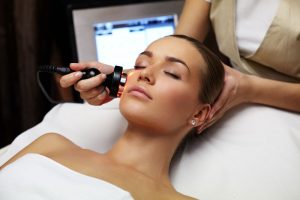 We all know we should be taking better care of our skin. But sometimes it’s difficult to ensure we’re doing the right things all of the time. That’s where facial treatments can be enlisted to help bring us back to a fresh face. For those who are in need of more than a simple spa treatment, a medical facial might be the answer. How do medical facials benefit your skin? In this article, we’ll find out.
We all know we should be taking better care of our skin. But sometimes it’s difficult to ensure we’re doing the right things all of the time. That’s where facial treatments can be enlisted to help bring us back to a fresh face. For those who are in need of more than a simple spa treatment, a medical facial might be the answer. How do medical facials benefit your skin? In this article, we’ll find out.
What Is A Medical Facial?
Medical facials can only be performed in the office of a licensed cosmetic physician who are allowed to use medical grade tools and skincare products. Medical facials can encompass a wide variety of different treatments, but what makes them different from a spa facial is the supervision of a medical doctor. This also allows the use of stronger skincare products. For example, a regular spa facial can use up to a 30% glycolic acid solution, whereas a medical facial can use stronger products, such as a 70% glycolic acid peel or different techniques, such as dermaplaning.
What Are The Benefits Of A Medical Facial?
One of the biggest benefits of a medical-grade facial is that it will be customized for your specific circumstances. Getting a regular spa facial generally means you’re receiving the same treatment that every patient gets. The technician performing a medical facial takes into account your specific needs and tailors the treatment according to your skin type, issues and desired outcomes.
What Can A Medical Facial Do?
Similar to a spa facial, a medical-grade facial will clean, exfoliate and hydrate your skin. However, the techniques and formulas used to achieve these goals will be results-driven according to the medical analysis of your skin. It’s possible that the products used will be stronger than what’s used in a spa. Similarly, some of the equipment used by the esthetician may not be available for use in an average spa facial.
How Often Can You Get A Medical Facial?
Quite often, medical facials will take place over a course of multiple sessions. However, the exact regimen will be specific to each patient. Not everyone will need multiple treatments. For those who do, they’re often spaced out about four to six weeks apart. Speaking to your esthetician will allow you to chart out the correct course to match your needs.
 Leeza has been operating a hair removal business since 1987, starting with electrolysis services and then evolving to laser hair removal and laser skin treatments. Being aware of the many different types of laser hair removal technologies available, her method of choosing a successful product was to personally undergo the procedure herself...
Leeza has been operating a hair removal business since 1987, starting with electrolysis services and then evolving to laser hair removal and laser skin treatments. Being aware of the many different types of laser hair removal technologies available, her method of choosing a successful product was to personally undergo the procedure herself...